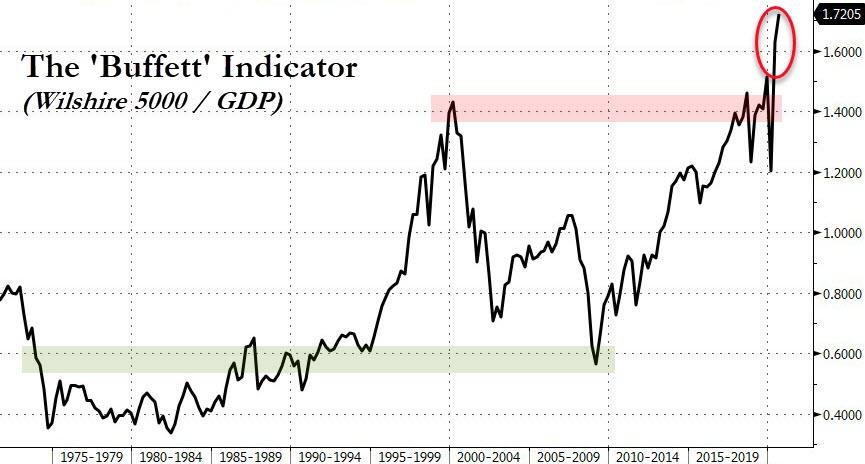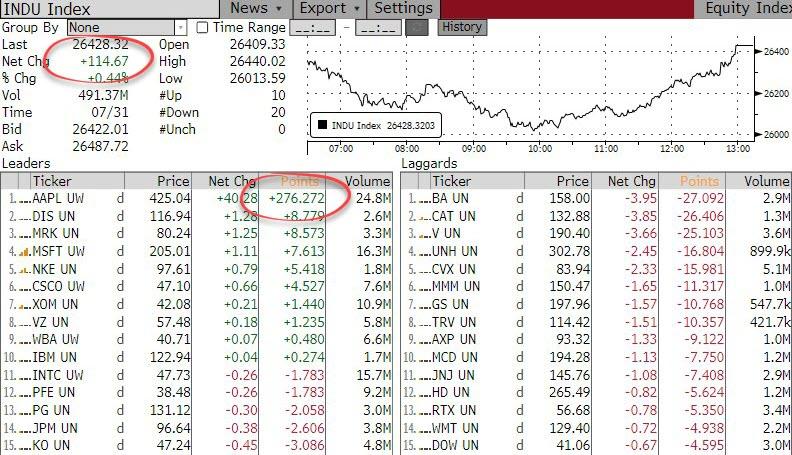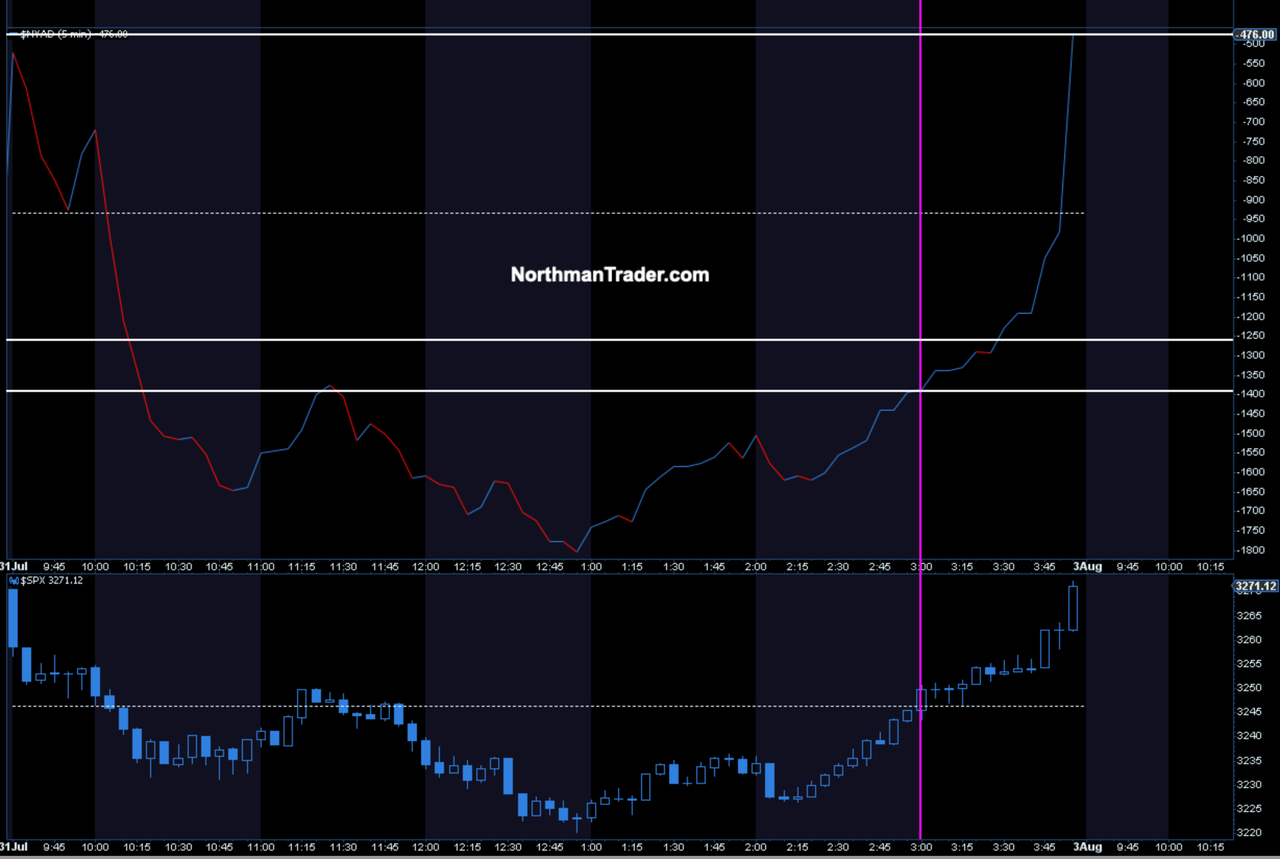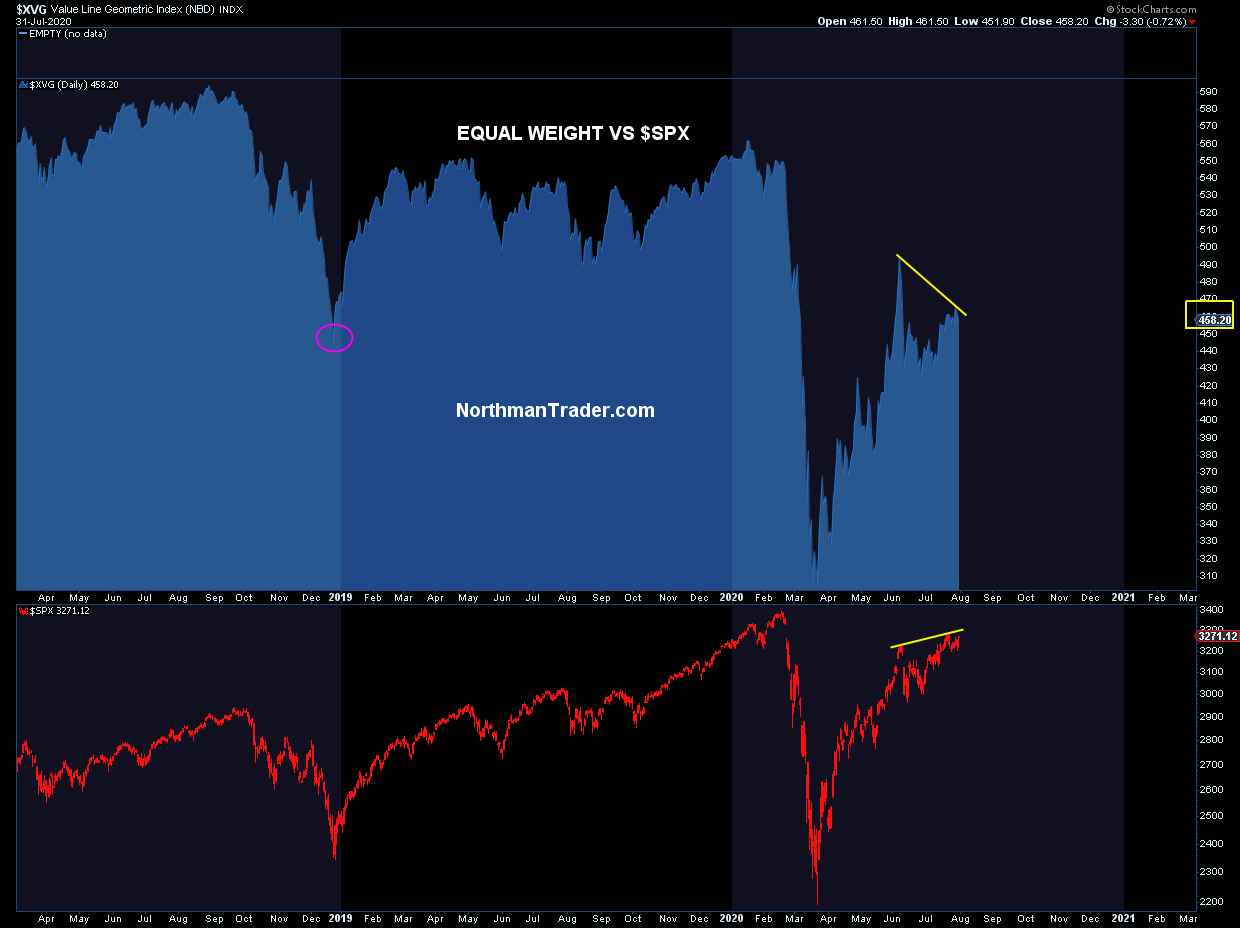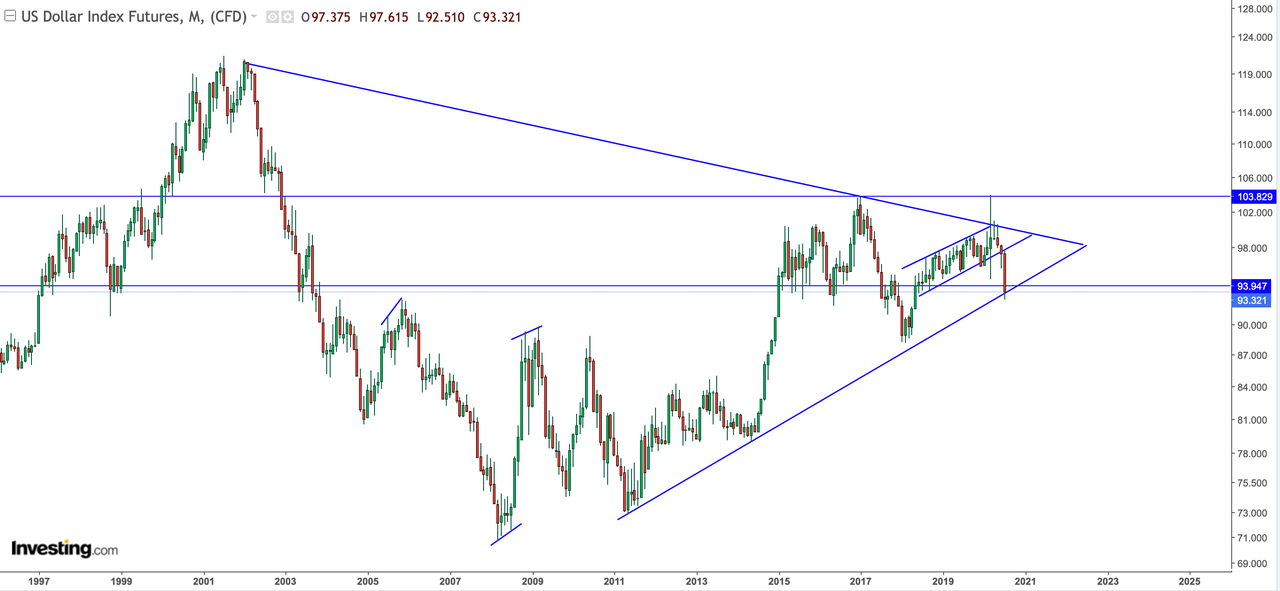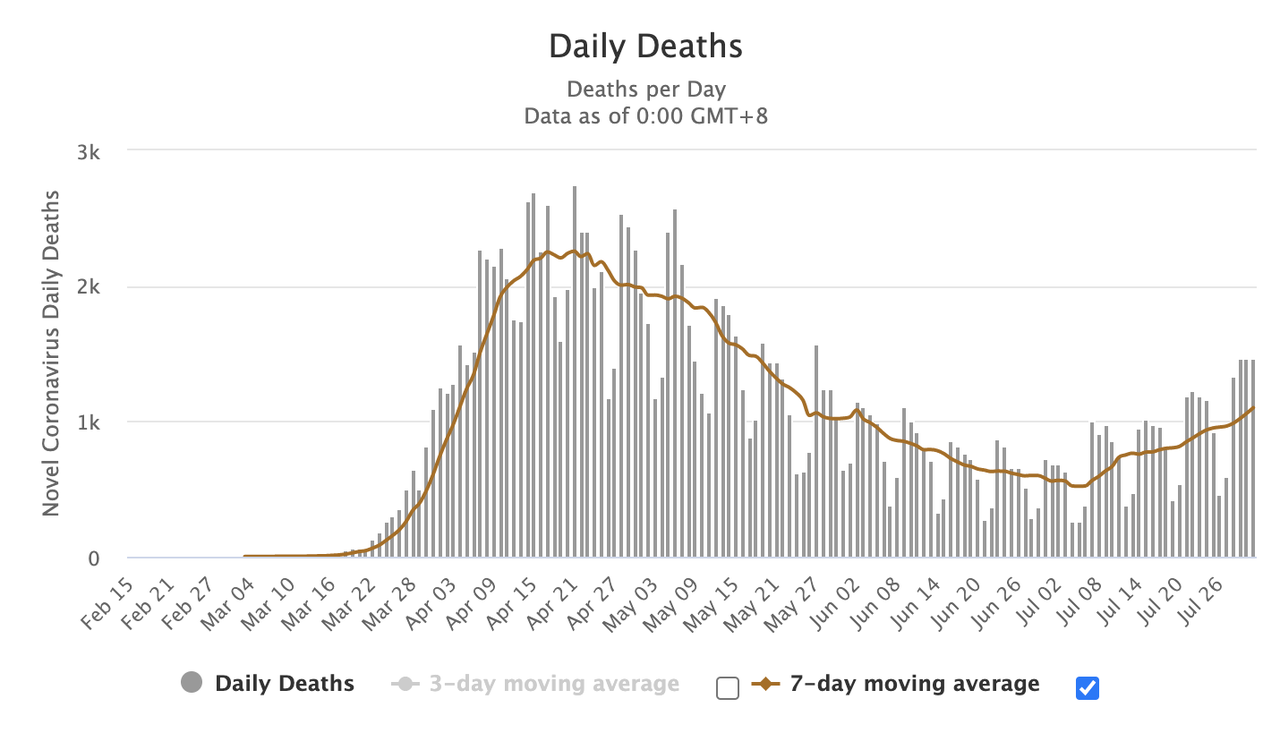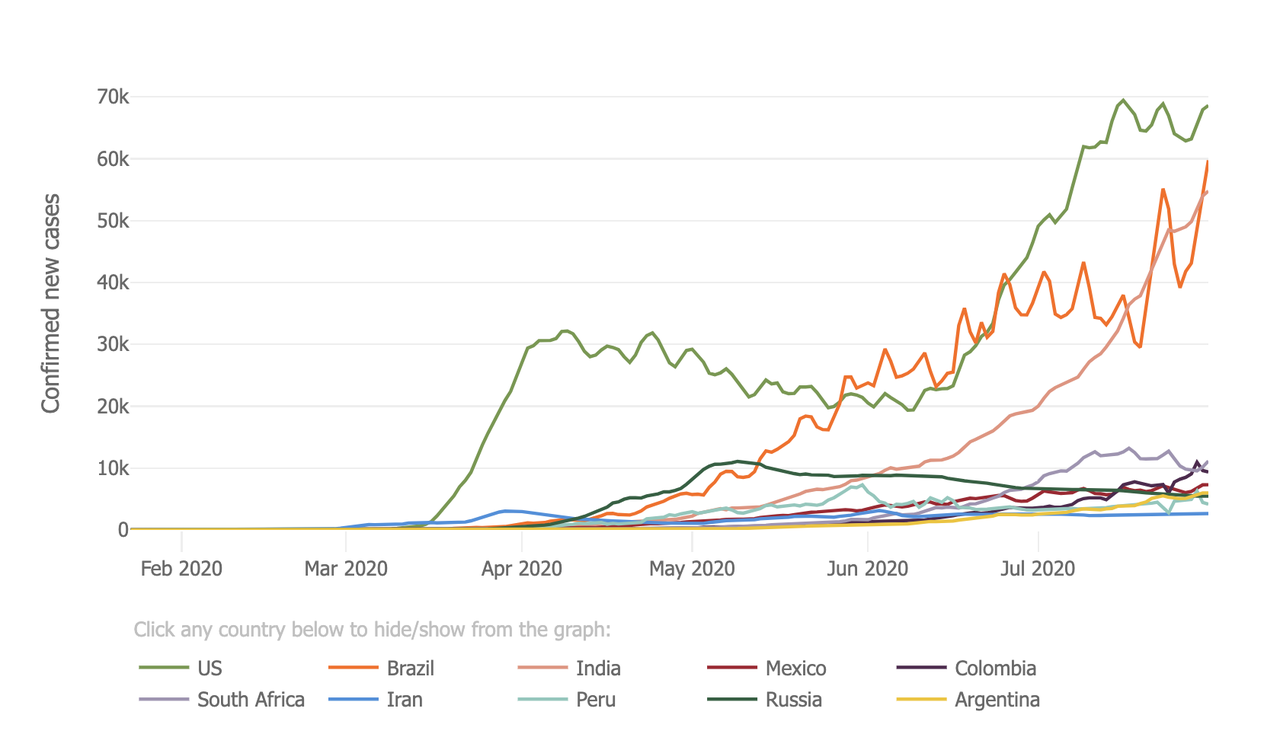
“What we’re playing for now is to see if we can limit climate change to the point where we don’t wipe out civilizations,” the environmental writer Bill McKibben declared back in 2018. “The climate crisis is way worse than people generally realize, way worse,” said former Vice President Al Gore in January of this year. Presumptive Democratic nominee Joe Biden evidently concurs: Announcing his $2 trillion climate change plan in July, he said that the world has “nine years before the damage is irreversible.”
And climate change isn’t the only environmental disaster that people see looming. “We cannot hide away from human population growth,” argued primatologist Jane Goodall in January. “All these [environmental] things we talk about wouldn’t be a problem if there was the size of population that there was 500 years ago.” The Stanford biologist Paul Ehrlich co-wrote an article this year in the prestigious Proceedings of the National Academy of Sciences declaring, “The ongoing sixth mass extinction may be the most serious environmental threat to the persistence of civilization, because it is irreversible.” And as fires burned to clear agricultural land in Brazil last year, French President Emmanuel Macron tweeted: “The Amazon rain forest—the lungs which produces 20% of our planet’s oxygen—is on fire. It is an international crisis.”
According to these activists and politicians, humanity is beset on all sides by catastrophes that could kill off civilization, and maybe even our species. Are they right?
Absolutely not, answers the longtime environmental activist Michael Shellenberger in an engaging new book, Apocalypse Never: Why Environmental Alarmism Hurts Us All. “Much of what people are being told about the environment, including the climate, is wrong, and we desperately need to get it right,” he writes. “I decided to write Apocalypse Never after getting fed up with the exaggeration, alarmism, and extremism that are the enemy of positive, humanistic, and rational environmentalism.” While fully acknowledging that significant global environmental problems exist, Shellenberger argues that they do not constitute inexorable existential threats. Economic growth and technological progress, he says, can ameliorate them.
Shellenberger’s analysis relies on largely uncontroversial mainstream science, including reports from the Intergovernmental Panel on Climate Change (IPCC) and the Food and Agriculture Organization. And as a longstanding activist, Shellenberger is in a good position to parse the motives behind the purveyors of doom.
Shellenberger’s activism is the real deal. To raise a donation to the Rainforest Action Network, he charged his friends $5 to attend his 16th birthday party. At 17 he went to Nicaragua to experience the Sandinista revolution. In the 1990s he worked with the Landless Workers’ Movement in Brazil.
In 2003, Shellenberger and allies launched the New Apollo Project to jumpstart a no-carbon energy revolution over the next 10 years. In 2008, Time named him “A Hero of the Environment.” He co-founded the ecomodernist Breakthrough Institute, which advocates the use of advanced technologies such as nuclear power and agricultural biotechnology to decouple the economy from the ecology, allowing both humanity and the natural world to flourish. More recently, he founded Environmental Progress, which campaigns for, among other things, the deployment of clean modern nuclear power. He is an invited expert reviewer of the Intergovernmental Panel on Climate Change’s next assessment report.
So what does he say about climate change? “On behalf of environmentalists everywhere, I would like to formally apologize for the climate scare we created over the last 30 years,” he wrote in an essay to promote his new book. “Climate change is happening. It’s just not the end of the world. It’s not even our most serious environmental problem.” Needless to say, there are environmentalists everywhere who do not believe they have anything to apologize for. A group of six researchers assembled by the widely respected Climate Feedback fact-checking consortium rated his article as having low scientific credibility.
Shellenberger doesn’t devote much of Apocalypse Never to the science behind man-made climate change. He basically accepts the consensus that it’s a significant problem and instead focuses on various claims about the harms it is supposedly already causing. In that promotional essay, he argues that (1) human being are not causing a “sixth mass extinction,” (2) the Amazon rainforests are not the “lungs of the world,” (3) climate change is not making natural disasters worse, and (4) fires have declined 25 percent around the world since 2003.
Shellenberger isn’t denying the reality of man-made climate change. He’s arguing that humanity is already adapting to the ways climate change has been making weather patterns evolve, and that we will continue to adapt successfully in the future. His book is ultimately a sustained argument that poverty is world’s most important environmental problem, and that rising prosperity and increasing technological prowess will ameliorate or reverse most deleterious environmental trends.
Shellenberger vs. Climate Feedback
To see how persuasive Shellenberger is, let’s parse those four claims and the Climate Feedback researchers’ pushback against them.
First: the so-called sixth mass extinction. Biologist Gerardo Ceballos, the chief Climate Feedback respondent on this topic, has co-authored several prominent studies arguing that current extinction rates are well above the natural or background rates of the past million years. What does this increase suggest will happen over the rest of this century? In a report last year, the Intergovernmental Science-Policy Platform on Biodiversity and Ecosystem Services (IPBES) warned that the “global rate of species extinction is already at least tens to hundreds of times higher than the average rate over the past 10 million years and is accelerating.”
The IPBES researchers estimated the background extinction rate without human influence at about 0.1 species per million species-years. In other words, if you follow the fates of a million species, you would expect to observe an average of about one going extinct each decade. IPBES says the planet harbors around 8 million species, suggesting that around eight species naturally go extinct every 10 years. Boosting the natural background rate by a factor of 1,000 would mean that 8,000 species go extinct every 10 years, or 800 per year. At that rate, some 64,000 species—about 0.08 percent of species—could go extinct by the end of this century. That’s not good, but it’s nowhere near the level of earlier mass extinctions, when 70 to 95 percent of species went extinct.
The IPBES report attributes the recent declines in biodiversity primarily to—in order of importance—”changes in land and sea use; direct exploitation of organisms; climate change; pollution; and invasion of alien species.” Shellenberger agrees: “Habitat loss and the direct killing of wild animals are bigger threats to species than climate change.”
In his book, Shellenberger argues that the most effective way to prevent biodiversity loss is to speed the adoption of modern crop technologies to greatly boost agricultural yields in poor countries. This frees up land to revert to nature, and it prompts more rural people to move to cities, where they can enjoy greater educational, economic, and entertainment opportunities.
Partially as a result of these trends, global tree cover expanded 7 percent from 1982 to 2016. In addition, officially designated protected areas have grown to cover about 15 percent of the world’s terrestrial and inland waters, 10 percent of the coastal and marine areas, and 4 percent of the global oceans. The risks of a sixth mass extinction will likely abate as an increasingly prosperous humanity continues its withdrawal from nature.
Second: the idea that the Amazon rainforests are the “lungs” of the planet. Zeke Hausfather, the Breakthrough Institute’s director of climate and energy, wrote in the Climate Feedback response that “climate scientists—and the majority of activists—have never claimed this to be the case.” Still, a quick search of the Nexis media database using the terms Amazon and lungs turned up more than 4,000 stories in just 2019. And several environmental activist groups, including Greenpeace, Friends of the Earth, Rainforest Action, the Sierra Club, and the Natural Resources Defense Council, did not refrain from using the lungs metaphor in their statements decrying the Amazon fires last year.
In any event, the Amazon actually absorbs about as much oxygen as it produces. Pace Macron, it does not produce 20 percent of Earth’s oxygen.
What about the 2019 fires in the Amazon? “The first thing is that they’re not wildfires. Almost all of the fires have been set, so they’re anthropogenic in origin. A minority are actually in the rainforest,” the University of Maryland geographer Matthew Hansen, head of a NASA satellite project that tracks changes in earth’s vegetation and forests, told Maryland Today. “The vast majority look like maintenance fires set on already cleared land, which farmers might be burning to reduce vegetation cover in expanding land use, pastures in most cases.”
Nor was the extent of the 2019 Amazon fires unprecedentedly large. According to Brazil’s National Space Research Institute, whose records begin in 1998, the number of active fires detected by satellites for the month of August (33,405) were indeed more than double what they were in the previous year (15,001). On the other hand, the number of current fires is way down from earlier years. Since 1998, fires exceeded the 2019 number in eight prior years, with 73,683 fires in the peak year of 2005.
Meanwhile, though the annual deforestation rate in the Brazilian Amazon has increased a bit recently, it is still about two-thirds lower than it was just 15 years earlier. As Shellenberger notes, about 80 percent of the Brazilian Amazon rainforest still stands.
In his critique of Shellenberger, Hausfather suggests that because of deforestation and climate change, much of the Amazon may be at the tipping point of a dieback that could turn it into a savannah-like ecosystem by the end of this century. “The risk of triggering tipping points increases at higher planetary temperatures, and thus our goal should be for reduce emissions and keep temperatures as low as possible without undermining economic development,” writes Shellenberger. Helping Brazilian farmers to double the productivity of the land already cleared, he argues, would go a long way toward preventing the Amazon from reaching such a tipping point.
Third: the belief that climate change is making natural disasters worse. “While disasters related to non-climate-change events (such as volcanoes, earthquakes, tsunamis) have not increased in frequency, those associated with climate change have tripled in frequency since the 1980s,” argues Jennifer Lewis, a senior scientist at the Woods Hole Research Center, in Climate Feedback’s response. As evidence, she cites a chart from the German reinsurance company Munich Re; it shows a rising trend since 1980 in the number of loss events due to natural disasters that exceed set monetary and fatality thresholds. Oddly, Lewis fails to note another Munich Re chart in the same source document, which shows essentially no trend in normalized natural disaster losses since the late 1980s. (Normalization is a process that attempts to estimate direct economic losses from a historical natural disaster as if that same event were to occur under contemporary social conditions.)
Are natural disasters becoming more frequent? While more heat waves and intense rainfall events are occurring, no strong trends in floods, tropical cyclones, or tornadoes have been identified.
Using Munich Re data, the University of Colorado political scientist Roger Pielke Jr. recently reported in Environmental Hazards that climate- and weather-related losses declined from 1990 to 2017, dropping “from more than 0.25% of global GDP to below 0.20%.” As Pielke later noted, “This means that as the world has become wealthier, weather disasters are costing relatively less.” Basically, the Munich Re data shows that natural disasters have been destroying a falling percentage of humanity’s accumulating stuff since 1990. Keep in mind that the United Nations, under its Sustainable Development Goals framework, has identified a reduction in disaster losses as a proportion of GDP as a key indicator of progress.
A fascinating 2019 study in Global Environmental Change looked at the global effects from 1980 to 2016 of seven climate-related hazards: floods, flash floods, coastal floods, cold waves, heat waves, drought, and wind. The authors found “a clear decreasing trend in both human and economic vulnerability, with global average mortality and economic loss rates that have dropped by 6.5 and nearly 5 times, respectively, from 1980–1989 to 2007–2016.” Not surprisingly, the researchers report that their “results also show a clear negative relation between vulnerability and wealth.” Richer countries and richer people are less vulnerable to natural disasters and are better able to protect their property from the weather.
Overall, the number of people who die in natural disasters annually has dropped by 99 percent since the 20th century peak in 1931. World population has nearly quadrupled over that period of time.
So are natural disasters getting worse? With respect to overall human welfare, the answer seems pretty clearly to be no. Shellenberger’s point, again, is that rising wealth and continuing innovation will let people adapt to possibly worsening weather as the century unfolds.
Fourth: the number of fires. “There was a whopping 25 percent decrease in the annual area burned globally from 1998 to 2015, thanks mainly to economic growth,” Shellenberger observes in his book. In his essay, he says that “the build-up of wood fuel and more houses near forests, not climate change, explain why there are more, and more dangerous, fires in Australia and California.” The Swansea geographer Stefan Doerr responded for Climate Feedback: “It is correct that the total global area burned has OVERALL declined over the last decades, BUT this is incorrectly used to argue that climate change is not affecting wildfires.”
Both Shellenberger and the Climate Feedback researchers accept the findings from in a 2017 Science article that used satellite data to measure the extent of the world’s fires. From 1998 to 2015, that paper says, the global burned area declined by around 25 percent despite the influence of climate change. The article attributed the decline to agricultural expansion and intensification. A 2018 study in the Journal of Geophysical Research: Atmospheres similarly reports a strong, statistically significant global decline in active fires from 2001 to 2016.
What about the fires in California and Australia? “Here Shellenberger sets up a false dichotomy,” writes Hausfather. “All three factors—buildup of vegetation due to fire suppression, more people living in the wildland-urban interface, and hotter and dryer conditions have contributed to severe wildfires in regions like the western US in recent years.”
For example, a 2019 study in Earth’s Future noted that since the early 1970s, California’s annual wildfire extent has increased fivefold. The researchers concluded that this increase “was very likely driven by drying of fuels promoted by human-induced warming.” A 2016 study in the Proceedings of the National Academy of Sciences found a similar climate-change-driven drying trend had doubled the cumulative forest fire area in the western U.S. since 1984.
That said, the recent fires in the western U.S. are not unprecedented. While the area burned annually in the American West has been increasing in recent decades, a 2018 study in Earth’s Future points out that the “area burning in recent years is a small fraction of what burned prior to the 1920s.” Even in 1930 and 1931, more than 50 million acres of wildlands burned, compared to the recent high of 10 million acres burned in 2015.
Setting aside last year’s conflagration in Australia, a 2017 study reported that from 2001 to 2015 the trend in Australian fire activity was downward. “These decreasing fire regions are relatively highly populated, so we suggest that the declining trends are due to improved fire management, reducing the size and duration of bush fires,” suggested the researchers. A 2019 study in Environmental Hazards found no rise in Australia from 1966 to 2017 in normalized losses from weather-related perils, including wildfires. Again, this suggests that rising wealth and improving technology are enabling people to adapt to and limit the future risks of wildfires.
How will man-made climate change affect future fire trends? A 2019 climate modeling study in Geophysical Research Letters reported that anthropogenic climate change is already causing fire weather conditions to rise above natural variability across many regions of the globe. Contrariwise, a 2020 report by Brazilian researchers found that the length and severity of fire seasons have been on a global downward trend since 2003. That study divides the global land area into grid cells and finds in more than half of them that both the length of the fire seasons and the number of fires have been declining. The researchers caution that their “historical data may not take into account climate change, which may considerably modify the fire seasons in the future.” But notwithstanding climate change’s effects, fires have not been increasing globally nor burning more land. This may change if the models projecting worsening fire weather turn out to be right.
What About Rising Sea Levels?
In his Climate Feedback response, the University of Illinois atmospheric scientist Ryan Sriver observes that Shellenberger made “essentially no mention of arguably the biggest risk of climate change: sea-level rise! The only statement I see is the claim: ‘Adapting to life below sea level made the Netherlands rich not poor.'” In Apocalypse Never, Shellenberger does cite an earlier IPCC estimate for sea level rise of as much 2 feet and 8 inches by the end of this century. Last year, the IPCC raised its high-end estimate to an increase of 3 feet and 7 inches by 2100.
Sriver notes correctly that coastal flooding has been increasing. “Sea level rise flooding of U.S. coastlines is happening now, and it is becoming more frequent each year,” the National Oceanic and Atmospheric Administration reported in July. But Sriver is missing Shellenberger’s larger point—that the Netherlands, where portions of the countryside lay 22 feet below sea level, is a successful example of how countries can adapt to rising seas.
In his 2019 book Falter, Bill McKibben argued, citing worst-case sea level rise studies, that much of the world’s coastlines are “not defensible”; in a throwaway claim, he declared that “no one is going to pay to build a seawall around the Bengali coast.” McKibben is already wrong about that. The poor country of Bangladesh, which accounts for about two-thirds of the Bengali coastline, has built more than 3,500 miles of walls and dikes to protect against coastal flooding. The World Bank has committed an additional $400 million to strengthen and extend the country’s defenses against sea level rise. And Dutch experts are working with the Bangladeshi government on plans to defend against encroaching seas.
After the catastrophic North Sea flood of 1953, the Netherlands embarked on a huge project to build and reinforce the nation’s dikes and sea walls. Real per capita income in Holland stood then at about $6,000 per person. In the last 10 years, Bangladesh’s GDP growth has hovered around 7 percent per year. Assuming that growth rate until 2050, Bangladesh’s real GDP will exceed $2 trillion by 2050. The country’s projected population will be just over 200 million by then, yielding a real per capita GDP of around $10,000 per person.
If the Dutch of the 1950s, with a lower real GDP per capita, could protect the third of their country that lies below sea level, there is every good reason to think that richer Bangladeshis with access to better technologies will be able to do so too. Still, it should be acknowledged that if sea levels were not rising, the Bangladeshis could spend their money on other projects.
The key question is whether it is better to mitigate climate change by investing in low carbon energy sources, or to adapt to climate change by investing in sea walls. The best strategy will most likely be a mixture of both sorts of investments.
A 2018 study in Global Environmental Change calculated the costs and benefits of protecting coastlines against rising sea levels. If the waters rise as high as 6 feet by 2100, the researchers found, protecting 13 percent of the world’s coastline would safeguard 90 percent of the population and 96 percent of the assets in the global coastal floodplain. In the study’s worst-case scenario, the cost for such protection would be around one percent of GDP for 41 countries. Yet again, better technologies and higher wealth will ameliorate the problems caused by climate change.
The Future of Food Security
“The most important thing for saving the environment is producing more food, particularly meat, on less land,” argues Shellenberger. The good news, he notes, is that while the amount of land devoted to agriculture has increased 8 percent since 1961, the amount of food produced in that space has increased 300 percent. Meanwhile, the amount of land devoted to raising the livestock we use for meat has “declined by an area nearly as large as Alaska.” As Shellenberger reports, providing farmers in poor countries access to modern agricultural techniques—e.g., better seeds, pesticides, and fertilizer—could increase corn, rice, and wheat yields fivefold.
As the world warms, will farmers be able keep up with the rising population and increasing demand for better foods? In its 2019 report on climate change and land, the IPCC observes that many studies using different methods to project how climate change will affect crop yields have “consistently showed negative temperature impacts on crop yield at the global scale.”
Most studies do project deleterious effects from climate change on crop yields. That being said, analyses that seek to find a consensus on the topic report the effects are likely to be small prior to 2050.
For example, a 2015 Environmental Research Letters study finds that, depending on the climate change scenario, global grain yields will nevertheless be 45 to 60 percent greater than now in 2050. This is well within a 2017 BioScience study’s projection of a global food demand increase by 2050 that ranges 25 to 70 percent above current global production.
Similarly, a 2017 policy report for the European Commission found that “the impact of climate change on agricultural production in 2050 is negative but relatively small at the aggregated global level.” A 2019 study in Environmental Research Letters concluded, assuming reasonable adaptations on the part of farmers, that “average impacts of climate change on crop yields up to the 2050s are generally small (but negative) for rice and wheat, and modest for maize.”
And these studies tend to extrapolate current crop yield trends without taking into account how breakthroughs can enhance crop yields even as the climate warms. Among the possibilities: boosting photosynthetic efficiency, drought and salinity tolerance, self-fertilizing cereals, and genomic editing.
Shellenberger claims that transitioning to an economy that uses only renewable energy “would require increasing the land used for energy from today’s 0.5% to 50%.” In his Climate Feedback response, Hausfather argues that this is a huge overestimate, citing a 2017 study from the Strata think tank comparing the land requirements of renewable and non-renewable electric power generation as evidence. The study finds that—setting aside the acreage devoted to power transmission—coal, natural gas, and nuclear power plants, plus mines, wells, and waste storage currently occupy just over 3,000 square kilometers (just under 1,200 square miles) of U.S. land.
A useful comparison would be to the land area requirements of a 2015 Stanford proposal to supply all of the country’s energy needs via wind, solar, and hydropower by 2055, entirely replacing both non-renewable electric power generation and transportation fuels. A 2017 critique of that plan calculated that the wind and solar components of the proposed infrastructure would occupy more than 600,000 square kilometers (about 232,000 square miles). That is just a bit smaller than Texas.
It’s not completely clear how Shellenberger calculated that 50 percent increase in land use, but it may be related to his calculations of how much land would be needed if gasoline were entirely replaced with bioethanol. Producing that much ethanol would require planting 653 million acres annually. Since cropland in the U.S. totals to about 400 million acres, this implies an acreage increase of more than 50 percent to fuel our vehicles.
Shellenberger’s statements in his promotional essay were clearly meant to be provocative, and they did indeed provoke the researchers associated with Climate Feedback. Both Shellenberger and the Climate Feedback respondents sometimes seem to be talking past one another. But Shellenbeger, on balance, seems more right than are his critics.
Beyond Malthusianism
Over his career as an activist, Shellenberger engaged with many of the leading intellectuals of the environmental movement. Looking back, he now recognizes Malthusianism’s central role in ideological environmentalism. In 1798, Thomas Robert Malthus published An Essay on the Principle of Population, which argued that human population growth would always outstrip increases in food supplies, thus forever condemning some portion of humanity to starvation, misery, disease, and death.
Malthus’ argument was initially embraced by patrician conservatives. “What gave Malthus his popularity among the ruling classes was the fact that he furnished a plausible reason for the assumption that some have a better right to existence than others,” the economist Henry George explained in his 1879 book Progress and Poverty. But after World War II, Shellenberger recounts, “Malthusianism switched sides and became a left-wing political movement in the form of environmentalism.” He traces modern environmentalist permutations of Malthusianism from the now discredited overpopulation panic through the debunked oil and non-renewable resource depletion scares to the current fears of a climate apocalypse.
From his vantage point in the movement, Shellenberger suggests that for many adherents, environmentalism fills a spiritual emptiness and gives meaning to their lives. “Apocalyptic environmentalism gives people a purpose; to save the world from climate change, or some other environmental disaster,” he writes. “It provides people with a story that casts them as heroes, which some scholars…believe we need in order to find meaning in our lives.” He further speculates: “If the climate apocalypse is a kind of subconscious fantasy for people who dislike civilization, it might help explain why the people who are the most alarmist about environmental problems are also the most opposed to the technologies capable of addressing them, from fertilizer and flood control to natural gas and nuclear power.”
Solve poverty, Shellenberger says, and problems like species extinction, rainforest deforestation, natural disaster risks, wildfires, rising sea levels, and food insecurity become tractable. Shellenberger persuasively argues that the key to alleviating poverty is to supply poor people with access to reliable and cheap energy. Yes, burning fossil fuels to generate electricity and to transport people and goods loads up the atmosphere with globe-warming carbon dioxide. But coal, oil, and natural gas are much better for the natural world than forcing 3 billion poor people to keep chopping down forests for wood and charcoal to cook their food and heat their houses.
“Environmental humanism will eventually triumph over apocalyptic environmentalism,” Shellenberger predicts, “because the vast majority of people in the world want both prosperity and nature, not nature without prosperity.” He’s right.
Disclosure: Shellenberger endorsed my 2015 book, The End of Doom, in which I predicted, “New technologies and wealth produced by human creativity will spark a vast environmental renewal in this century. I don’t fear for future generations; instead, I rejoice for them.”
from Latest – Reason.com https://ift.tt/2XhPU1Y
via IFTTT

